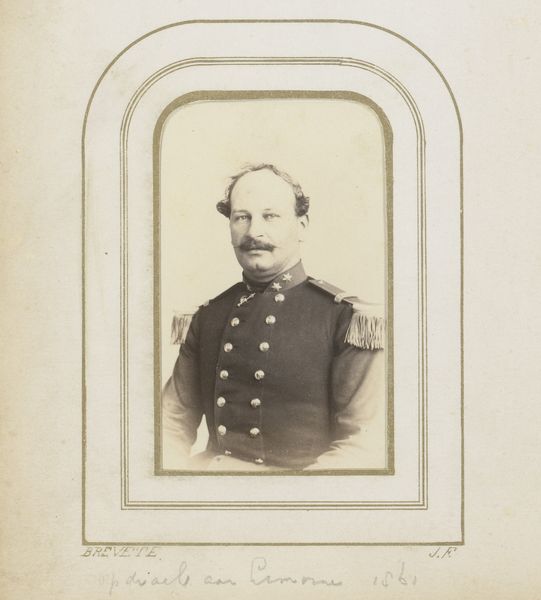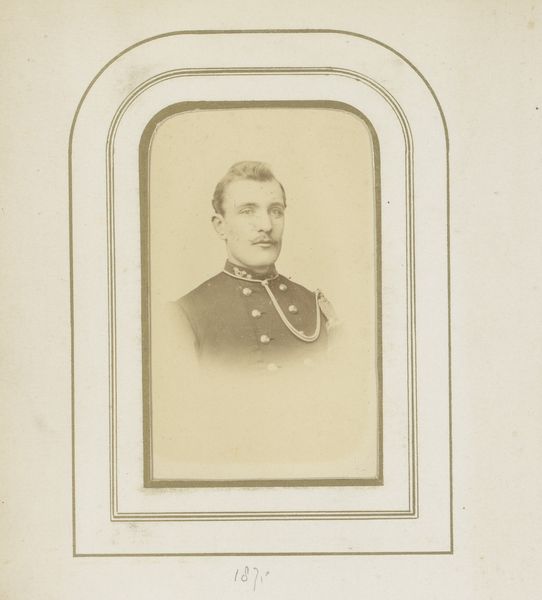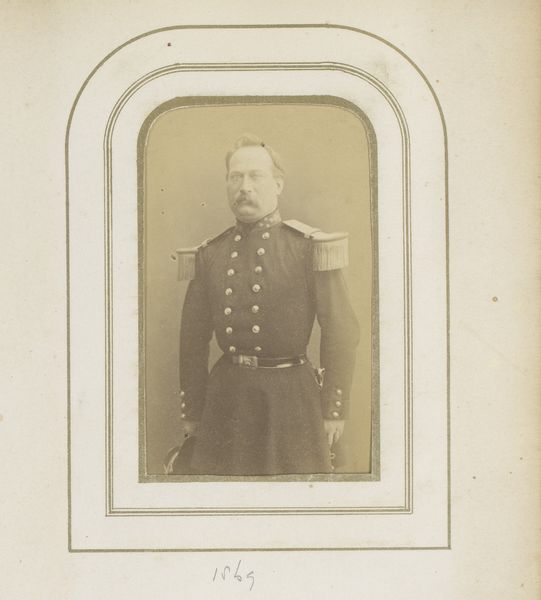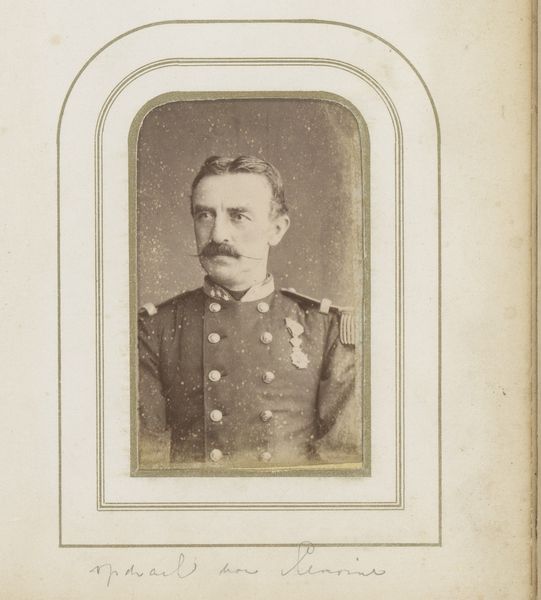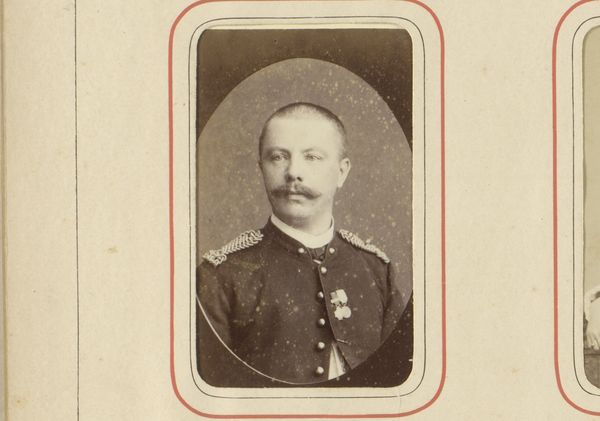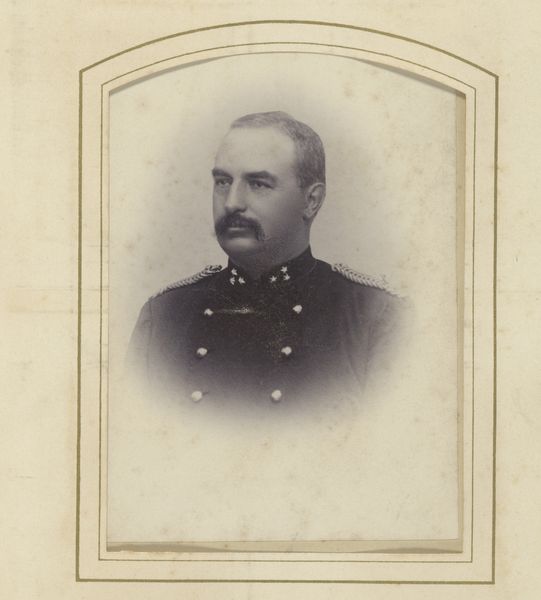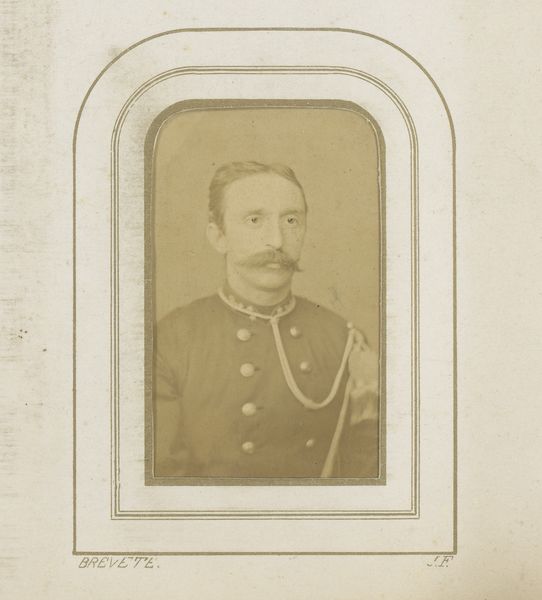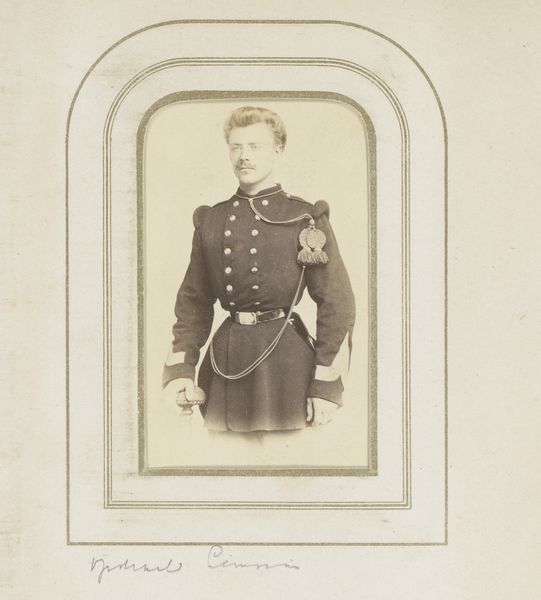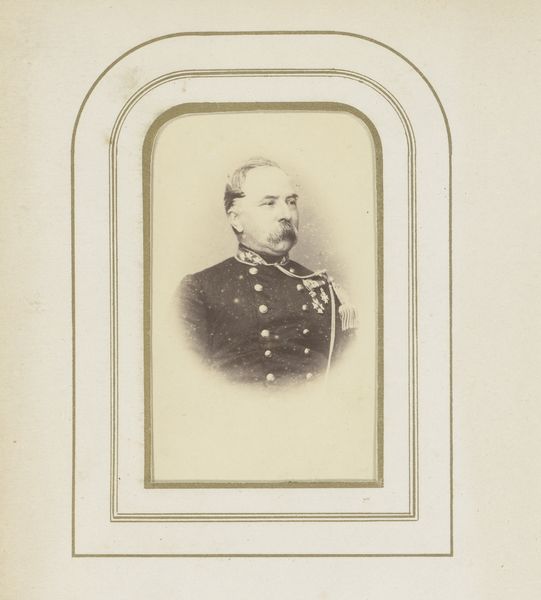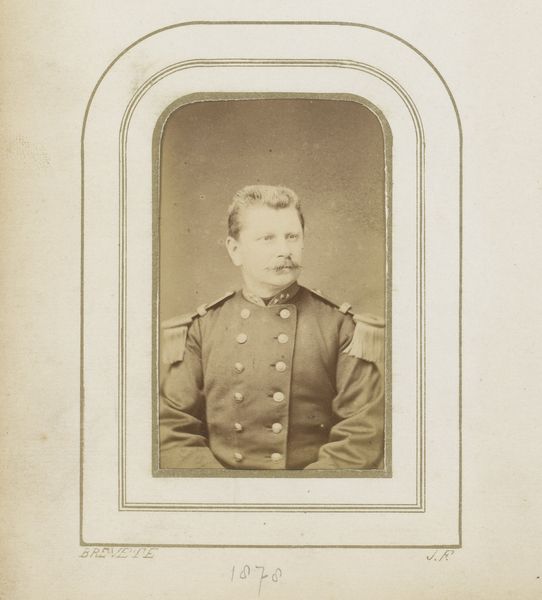
print, photography
#
portrait
# print
#
photography
#
19th century
Dimensions: height 83 mm, width 50 mm
Copyright: Rijks Museum: Open Domain
Editor: So, here we have a print titled "Portrait of a Man with a Moustache in Uniform," believed to be made between 1877 and 1880, by Edouard Josz. It has a slightly faded quality, and it gives a sense of formality. What can you tell us about it? Curator: This photograph immediately speaks to the rise of professional identity in the late 19th century. Portraiture at this time served less as an individual likeness and more as a symbol of status and belonging. The man's uniform, the moustache, the careful posing–all contribute to a constructed image of authority. What kind of authority do you think is represented here? Editor: I’d say, obviously, military, given the uniform and his stern look, but maybe even civic authority? Like a town leader? Curator: Precisely. Photography was democratizing representation, yet it was simultaneously reinforcing social hierarchies. This portrait, circulated publicly, would project power but also model citizenship. Notice the detail of his decorations. To whom was Josz trying to appeal? Editor: To the upper class maybe? Showing respect and flattering them somehow? Curator: Good point. There’s also the emerging middle class, keen to emulate aristocratic ideals. This portrait straddles that divide, making it a fascinating artifact of social mobility. Editor: That's interesting. I hadn’t considered how carefully constructed and socially deliberate these kinds of photos were back then. Curator: Exactly. It makes you think about how we stage our own images today and the narratives we build around ourselves. The political purpose is always shifting but it remains. Editor: I never thought a simple portrait could reveal so much about societal values. Curator: Art is almost always a window into a specific time, filtered through someone’s individual expression, reflecting politics in society and more.
Comments
No comments
Be the first to comment and join the conversation on the ultimate creative platform.
